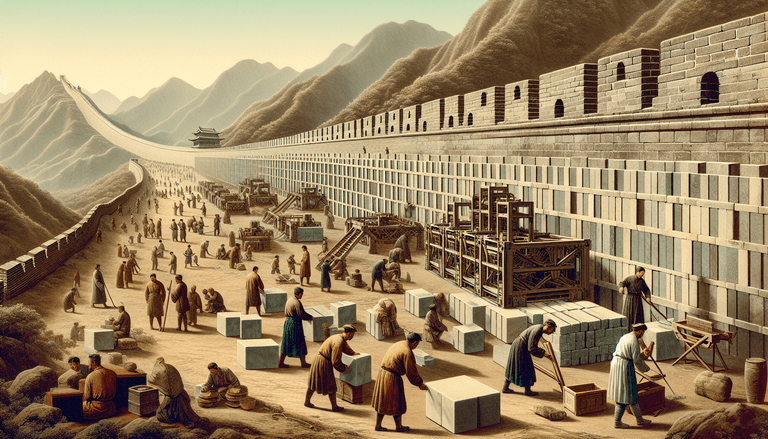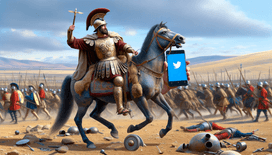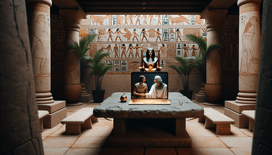Close your eyes for a moment, no, wait, keep them open so you can read this. Imagine: It’s the year 1474 and the Ming Dynasty is overseeing one of the most incredible architectural projects known to humanity, The Great Wall of China. A formidable edifice intended to keep any and all pesky invaders at bay, stretching thousands of miles across rugged landscapes. Naturally, it’s made entirely of hardened dragon energy and augmented with, oh, hang on, my time machine has pinged me somewhere strange!
This isn’t any ordinary Great Wall. It's the Great Wall recast with modern gusto and a marvel of influenced ingenuity, via the wondrous tool of the future: the humble 3D printer. Shall we take a whimsical walk along this digitally constructed path? Why not! Draft your best mental blueprints as we delve into this alternate reality.
From Mud Brick to Mouse Click
Historically, the Ming emperors, blueprint perfectionists with a dash of paranoia, bless them, pulled out all the stops, employing thousands of workers who toiled day and night constructing sections of the wall by hand. Now, picture this: The Ming Emperor, Zhu Yuanzhang, sipping his ceremonial tea (which he brewed after consulting the Great Search Engine Oracle, naturally), surrounded by a battalion of shiny, new 3D printers chugging away like the Little Engine That Could. The Emperor’s previous stress lines, etched deeper than the Grand Canyon itself, rapidly dissolve.
How remarkably efficient! A project that originally took centuries might now play out in mere decades. 3D printing could offer flexible, innovative solutions. No more lugging zillions of stones up treacherous slopes; with the strategic deployment of printers at key points, construction can boom faster than your ancestors could ever have imagined. It's as if they used stonemason sorcerers straight out of a fantasy novel!
Design Like the Dynasties
The tantalising tickle of artistic freedom arises when considering design possibilities; after all, why stick with simple bricks when your printers could conjure hexagonal blocks, impractically ornate turrets, or wall sections inscribed with motivational quotes? To take matters up a notch, perhaps the Wall could have special lookout points every few miles, each one equipped with a coffee barista and the latest choices in dim-sum tapas.
Defensive material could be transformed as well. The 3D printed wall might incorporate graphene, or even those laughably invincible polymers that only ever appear in spy movies circa 2077, ensuring enhanced durability against both human foes and the sulkiest of weather conditions. "The Hard Wall" suddenly gains a new meaning.
Manpower: Deconstructed and Discontinued?
Ah, but what about the valiant workers of the original Great Wall? Would they find themselves gainfully unemployed or possibly designing 3D wall components on AI-assisted tablets? Imagine a friendly AI apprentice named ZhaoGPT doling out instructions in digital calligraphy and the workforce sitting comfortably off-site in ergonomic chairs avoiding repetitive strain injury. Workers could become tech-savvy artisans, seamlessly transitioning from battling bricks to befriending bytes.
Better yet, they would communicate using holo-projectors installed within the emperor's grand chamber – "Next slide, Li, quick smart. This invasion premonition is a five-alarm fire!"
Diplomatic Diffusion: An Additional Wall Perk
As impressive as our technological leap appears, making friends has always helped keep the peace more than walls ever could. With public perception, communication, through innovation, and subtle flair of modernity, these 3D printed wonders could morph from glorified barriers to striking symbols of diplomacy. Foreign envoys would come to gaze, Snapchat, and stand #AmazedByInnovation alongside the impenetrable wall of 3D-infused artistic engineering. What better way to negotiate than over a foundation made of innovation?
But What About Tradition?
Though the allure of 3D printing beckons with magnetic force, it's only fair to wonder whether such advanced wizardry might strip away something essential from the allure of history – the effort, agony, and triumph of the human spirit, which drove craftsmen to immortalise their lores in a mesmerising tapestry of stone. Yes, the 3D printer offers, but does it take away? Or perhaps it reframes traditional crafts in a modern context, creating a new avenue for a time-honored legacy.
If only we could confer with great historian holograms or seek answers from time-travelling pigeons; alas, this alternate history remains a tantalising "what if," shimmering on the fringe of possibilities. Yet, if the fingerprints of technology dance with history's brushstrokes, the art tapestry just might unveil the most unexpected vision, far beyond what any emperor or restless dreamer could conjure in their wildest cosmic crossovers.
With profound thanks for landing your mind-oh-so-gently on this speculative journey down the Great Tech-nificent Wall of China. Until we tread another corridor where alternate facts meet fabulous fiction, dear history buffs and tech dreamers, the future awaits, just one 3D blueprint away.







